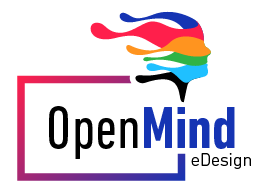
06 Sep Gamification in eLearning
Gamification has become a popular trend in the eLearning industry for a while.
There is no doubt that sometimes online learning can be a bit boring than face-to-face classes and this might be the reason why online instructors always look for ways to make it more fun, and interesting. In that direction, gamification emerges out as a great way to engage the learners. Yes, in recent times, online instructors have started using gamification to provide an engaging and effective learning environment for coursework delivery.
The latest research by Deloitte revealed that 80% of learners think learning would be more fruitful if it was more game-based. This outcome virtually sets the case for recategorizing gamification from an industry catchword to an integrated feature in eLearning.
What is gamification?
Gamification is basically a concept that has the potential to deliver great results. Integrated with other eLearning platforms, gamification inherits the essentials of gaming (e.g. leveling, points, and leaderboards) and directs them to motivate and engage learners.
Gamification in eLearning can be tremendously powerful. Research from the University of Colorado discovered that use of gamification in learning performed better in various learning assessments. Learner retention was also found to perform better when gamification was used in course delivery.
How does gamification work in eLearning?
Due to its high level of flexibility, gamification in eLearning can be used in many ways.
1. Leaderboards
Everyone loves to be on the top. Whether it’s beating one’s own record or someone else’s score, competition is always a healthy way to engage learners. While developing your online course, make the use of leaderboards for various situations and rate the performances on various parameters.
2. Badges
In regard to online education, badges can motivate learners to use specific functions of the learning platform, learn new skills, finish more courses, or even participate effectively in the group. You can even take it a step beyond by enabling learners to level up certain badges as they meet new objectives.
3. Points and currency
Points are largely a variation on badges, and can also be used as currency in the course program. For example, you can give learners one point for every comment they make in the discussion board, and let them convert a specific number of points into discounts.
4. Points and currency
Points are largely a variation on badges, and can also be used as currency in the course program. For example, you can give learners one point for every comment they make in the discussion board, and let them convert a specific number of points into discounts.
5. Virtual Scenarios
Simulations are widely popular in eLearning programs because of their immersive content. While for a majority of instructors, it is very difficult to develop a full-fledged simulation game, they can create various thoughtful scenarios. Learners can find their way through the scenarios, and check their performances upon completion. If results are not impressive, they can retry the scenario to earn a better score.
If used smartly, gamification can be a game-changer for online instructors who always look forward to engaging learners effectively.

No Comments